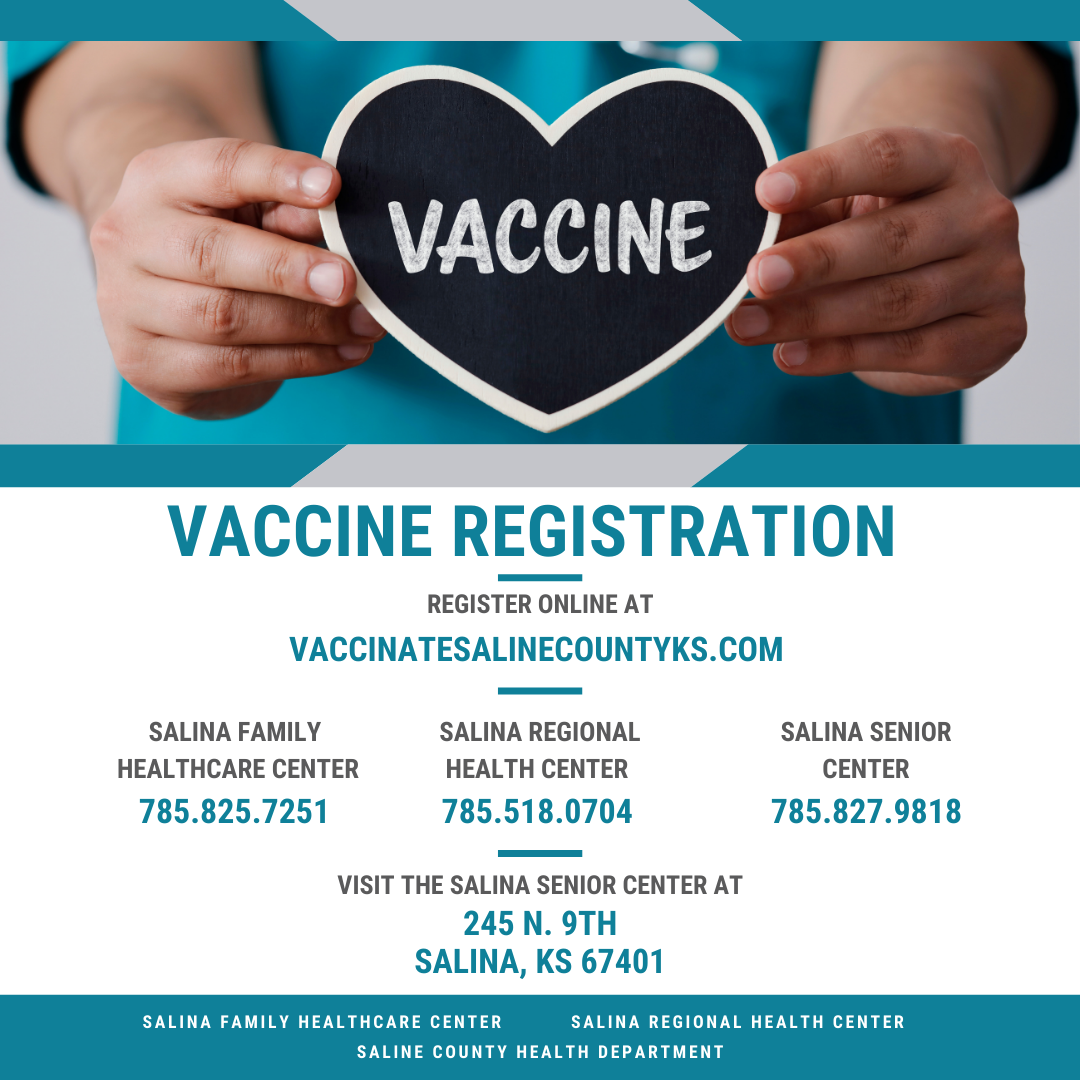Here's Tuesday's Vax Facts from the Saline County Health Department:
If you believe you are an eligible member of a Phase 2 population and have not yet registered please do so immediately.
If you have already registered, please do not register again.
We have received an additional allotment of 400 vaccines from KDHE earmarked for K-12 and childcare workers. This should allow us to complete vaccination of these populations by the end of this week.
KDHE has notified us that Salina can expect to receive 500 doses of the new Johnson and Johnson vaccine sometime this week. The Johnson and Johnson vaccine is a single shot, whereas Moderna and Pfizer both require two doses. With that in the mind, planning is in progress to determine the best use of the new vaccine to break the chain of transmission and help protect our entire community.
The community health partners will begin vaccination scheduling for all Phase 2 populations next week.
More than 7,000 people who live and work in Saline County have received either their first or both doses of the COVID-19 vaccination.
Phase 2 populations
Anyone living or working in licensed congregate settings and other special care or congregate environments.
Licensed congregate settings are facilities licensed by the state or local government, that provide housing or care arrangements and where social distancing is not possible, they provide a form of social service or healthcare (or healthcare-associated) service.
Settings included in this phase are monitored by the state or the local government, or house vulnerable populations under care, e.g. in-home care and retirement facilities.
Risk is increased because of:
●Proximity, i.e., residents and staff are less than 6ft away from one another;
●Type of contact, i.e., exposure to droplets, shared surfaces, common items;
●Duration, i.e., average interactions last more than 10 min;
●Potentially high number of contacts and, sometimes, difficulties to implement protective measures.
Examples include:
●Homeless shelters and other homeless housing settings and dwelling places;
●Congregate childcare institutions, adult and child protective services;
●Emergency shelters or safe houses for victims of domestic violence;
●Corrections facilities, including jails and juvenile justice facilities;
●Behavioral Health institutions (including mental health institutions) and residential treatment centers;
●Adult care homes, residents and staff in home plus facilities not covered in phase 1;
●Senior living homes;
●Home care givers (paid or unpaid), personal care aides.
High-contact critical workers
Workers providing critical services who are at a higher risk of being infected, because their jobs require consistent and close contact with a large number of individuals.
Critical workers are those necessary to maintain systems, assets and activities that are vital to the state (or national) security, the economy, or public health, as defined by the Department of Homeland Security.
Risk is associated with the likelihood of infecting oneself or spreading COVID. Factors that increase risk include proximity, type of contact, duration of contacts and challenges to implement protective measures.
Settings that provide a critical service and have recorded high transmission rates or become clusters in the past are usually high risk.
Examples include:
●Firefighters, police officers, first responders, correction officers;. Grocery store workers and food services
●K-12 and childcare workers, including teachers, custodians, drivers and other staff
●Food processing, including meat processing plants
●Large-scale aviation manufacturing plants
●Transportation workers
●Workers in the following industries, if they regularly need to be in high-risk settings to perform their duties:
-Retail, warehouses and sales outlets
-Agriculture
-Supply of critical services or materials for the COVID response (e.g. PPE) -The U.S. Postal Service
-Department of Motor Vehicles.
Senior citizens remain the priority Phase 2 population and continue to be allotted the majority of the unrestricted vaccine doses as we work to distribute vaccines throughout our community.
Vaccine supply remains the primary barrier to vaccinating our community.
Unfortunately due to the state allocation process local staff members are unable to tell you when you can expect a vaccine at the time of your registration. Please be patient and someone will call you as soon as we have vaccine available for you.
You can track KDHE's weekly vaccination allocation to each county on the KansasVaccine.gov data page.
Those without access to the internet can register via phone or by visiting the Salina Senior Services Center.
Please remember to be cordial with the medical personnel who are working tirelessly to serve the Saline County Community.






